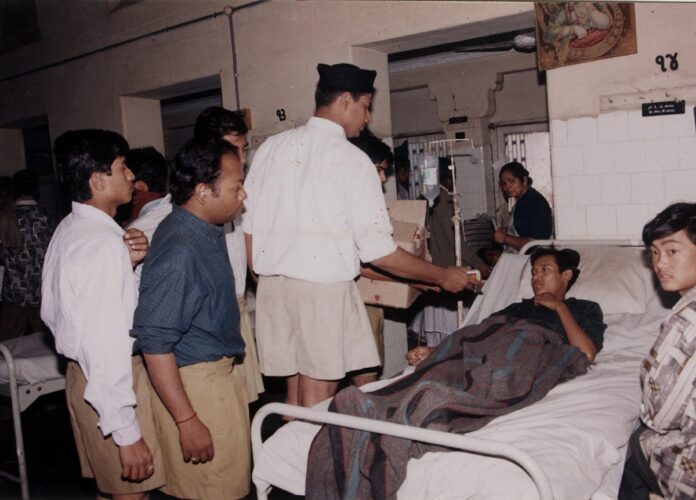Author: Sagar
Affiliation: Staff Writer at The Caravan
Organization/Publisher: Caravan Magazine
Date/Place: July 13, 2020/ India
Type of Literature: Political Commentary
Word Count: 3400
Link:https://caravanmagazine.in/politics/rss-sewa-coronavirus-lockdown-brahmanical-hindu-rashtra
Keywords: India, RSS, Fascism, COVID-19, Relief, NGO
Brief:
This commentary details “relief” work done by India’s Rashtriya Swayamsevak Sangh (RSS) or the Sangh, which is the fountainhead of India’s ruling Hindu nationalist Bharatiya Janta Party. The author begins by listening to RSS supreme leader Mohan Bhagwat’s live-streamed directions to his cadre as how the party will respond to the COVID-19 pandemic, as India’s Coronavirus cases rise, making it into the world’s top 3 for confirmed cases. The RSS’ supreme leader believes its relief work was for the “protection of their sacred community and their overall development,” relating it to “sense of belongingness” with the community. Taking inspiration from the Nazis’ social activities in Germany, the RSS is employing relief work as a strategy to “win the goodwill of people and make them favorable towards itself,” namely Brahmanical supremacy. Since its founding in 1925, the party has been banned three times in its 95-year history. The RSS is believed to be the world’s largest private militia, as it gives arms training to its cadres from the day they join it. The report, which further reveals the working and organizational structure of the party, also looks at the nexus of RSS-affiliated NGOs and how they utilize government resources. While tracing the RSS “relief work” in the country – stories of which are plagued by anti-Muslim pogroms – the report says it is undisputed that the Sangh has always had a political motive behind its philanthropy, which has helped them increase their “acceptance” among these communities. It says while the party’s relief projects are aimed at keeping the Dalit and tribal communities within the “Hindu fold,” however, the Sangh is internally controlled and ruled by Brahmins and other upper castes. Lower castes and members of the Dalit and tribal communities are employed to fill the role of foot soldiers.
By: Ruby Clayton, CIGA Resident Assistant




